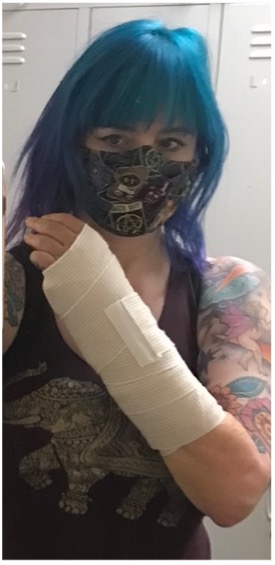This content is viewable by Everyone
News
Bite-size Learning to Creating Accessible PDFs
-
Author: Jill Wolters
- Date:
UCSF scanned websites reveal 18,240 public-facing PDFs with accessibility issues, according to Siteimprove metrics. To empower UCSF communicators with digital accessibility awareness and quick skill-building, a micro-learning path was created.
Common accessibility barrier with a quick fix: “the PDF has no title”
“Confusion exists among content creators about the easily-remedied issue of missing PDF title. For example, a title visibly appears at the top of a document, but it is missing ‘under the hood,’ in the metadata, which is what screen readers and other accessibility tools need,” says Jill Wolters, Digital Accessibility Program Manager.
Task: teach PDF owners how to make accessible digital content
To elevate centralized accessibility training opportunities, and make the training easily digestible, a learning path was created.
Paving the path
Dedicated accessibility allies from UCSF IT and Learning & Organization Development teamed up to curate short skill-building videos, articles and tools that speak to our organization’s available resources and main opportunity areas.
IT Adoption and Training Lead, Mike Marmon, and Jill Wolters reviewed current training materials, visit analytics and frequently asked questions from Office Hours and digital accessibility consultations to identify current use patterns.
Tanya Jansen from IT Communications continues championing digital accessibility with communications and outreach. You may remember Tanya from last year’s GAAD webinar about her temporary disability from a wrist injury. See the section titled “Temporary Disabilities: A UC Staff Person's Experience.” She may be in a different hair color phase now, but you can still find her at events like Staff Resources Day handing out flyers on digital accessibility.
Learning & Organization Development colleagues CJ Frosch and Adriane Guerrerio joined the effort, pulling in training completion and search analytics, as well as solicited feedback from UCSF content creators submitting their favorite digital accessibility learning resources. “We were delighted to see dozens of best practices shared from across UCSF, UCOP and external expert resources like WebAIM, falling right into alignment with our most popular questions and analytics" says CJ, “curating a learning path from these suggestions to address our common pitfalls at UCSF was pretty much apples-to-apples!”
Adriane recommends one of her favorites, “a quick, bite-sized resource that can help you fix one of the most common PDF accessibility issues – adding a document title:” add metadata, a 3-minute LinkedIn Learning video. Once you have added your PDF document title, it will be included in the document properties and can be utilized by accessibility tools like Siteimprove.
Adding a title to PDF metadata is a great baby step in creating more accessible and usable PDFs, though it does not guarantee that the document is fully accessible. CJ points out “the nice thing about LinkedIn Learning and our learning path is that you can pick-and-choose bite-sized modules that tackle whichever problem you’re looking to solve.” Check out the learning path for more short instructional videos on removing commonly flagged PDF accessibility barriers.
Result
Now all digital content creators at UCSF have a one-stop-shop for how to check their existing PDFs for accessibility, build accessible PDFs from scratch, and/or garner UCSF digital accessibility guidance and support: from attending office hours to joining communities of practice. Check out the learning path and share it with your communicators, PDF owners, and website creators today!
Have questions or feedback? Fill out the survey at the end of the learning path to help UCSF continuously improve, iterate, and empower more digital accessibility allies.
- Owning Team: Web Services
-
Team Lead: John Kealy
